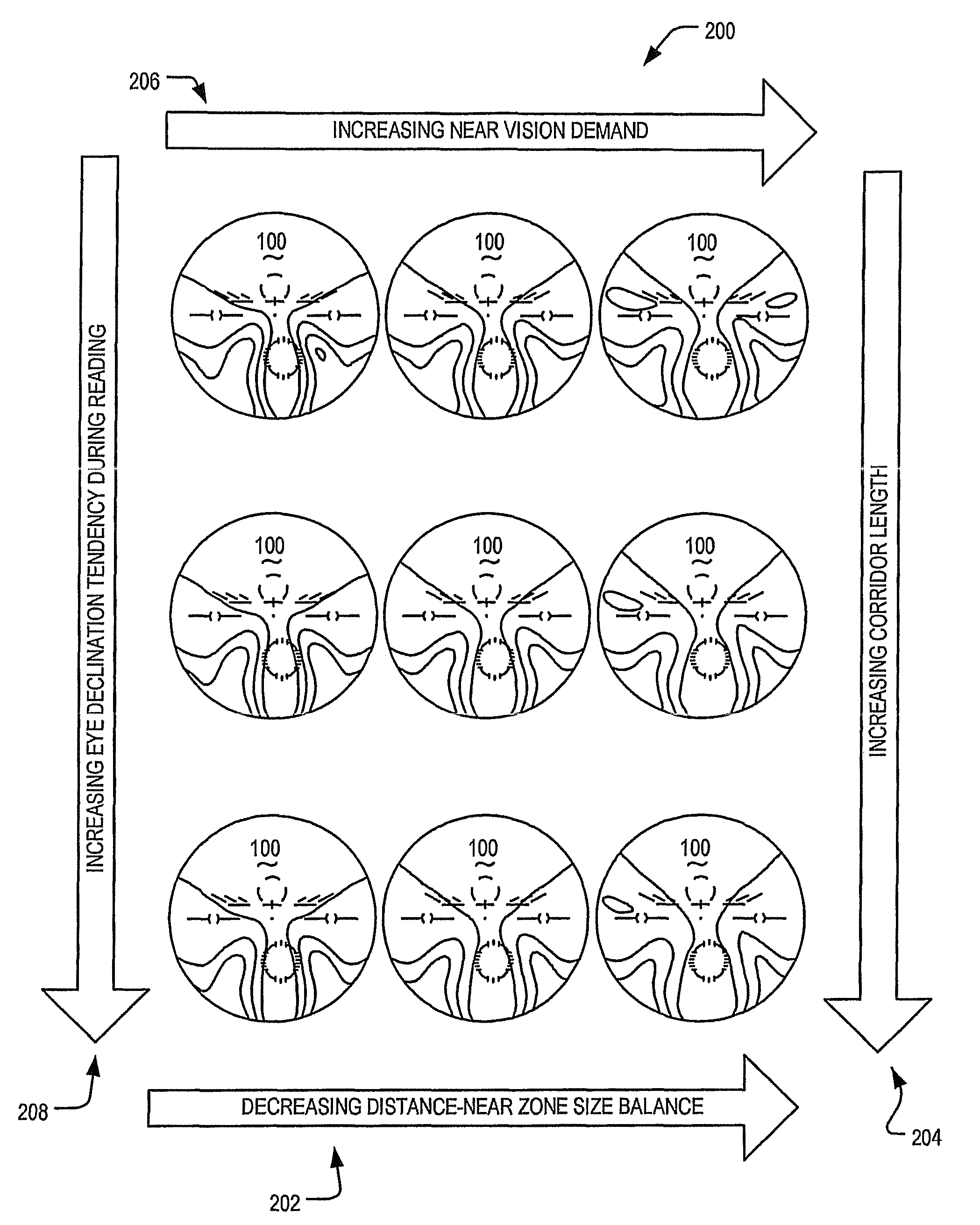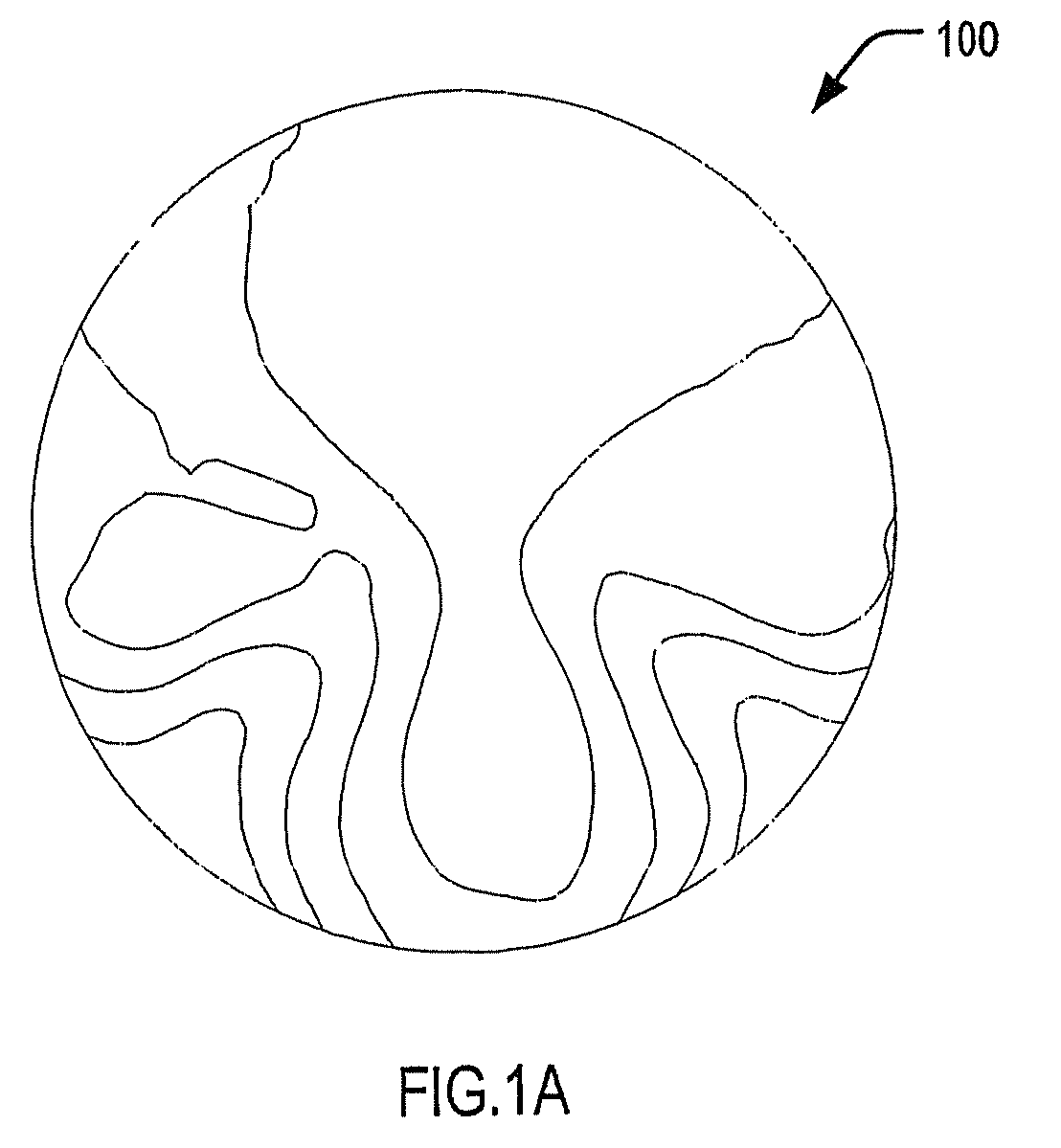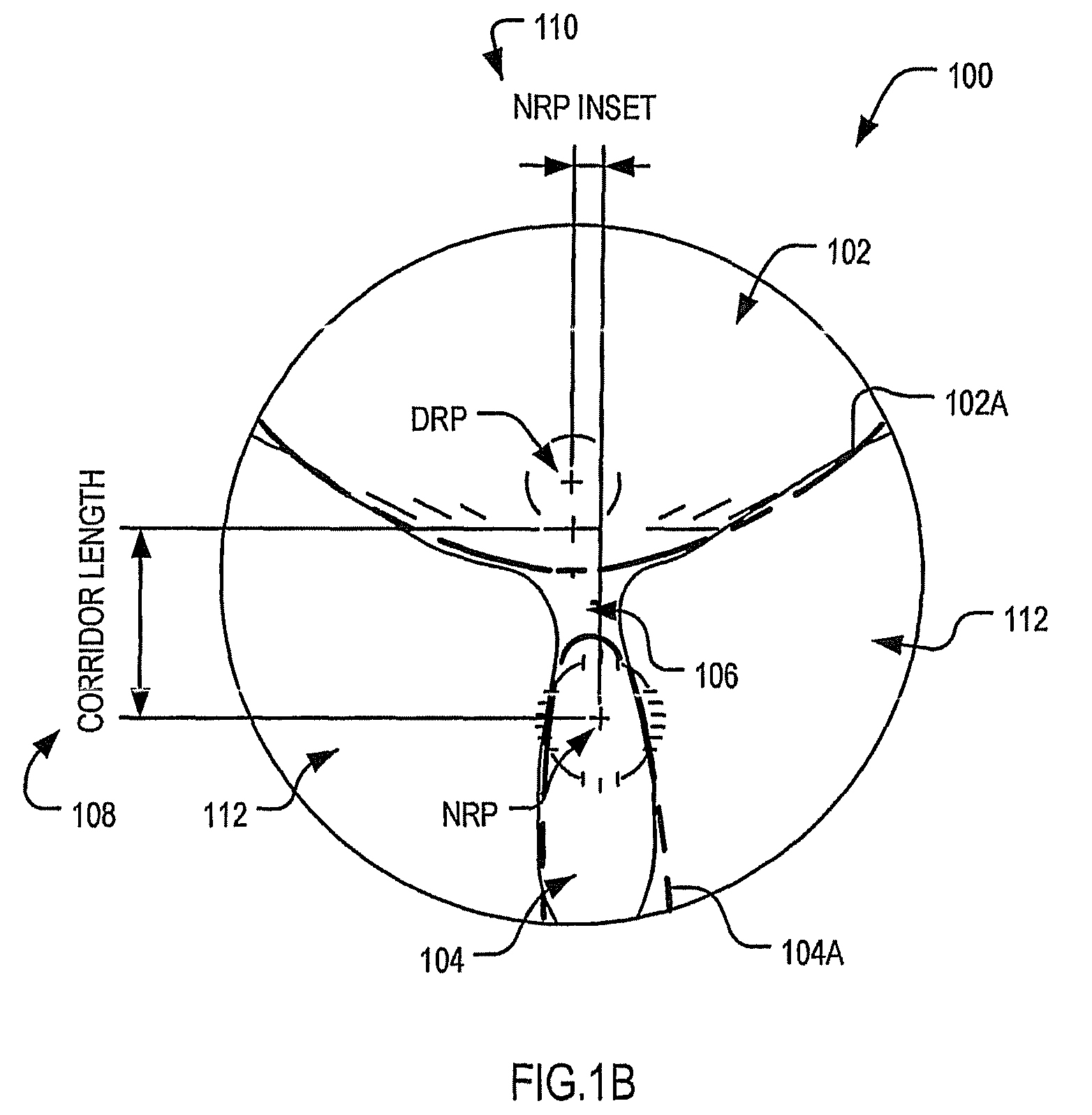Array of progressive ophthalmic lens elements
a technology of progressive ophthalmology and lens elements, which is applied in the field of array can solve the problems of a limited number of progressive ophthalmological lens elements included in a series of semi-finished lens elements, the inability to optimise the progressive surface of each progressive ophthalmological lens element in the series for a particular lens wearer, and the selection of lens designs
- Summary
- Abstract
- Description
- Claims
- Application Information
AI Technical Summary
Benefits of technology
Problems solved by technology
Method used
Image
Examples
Embodiment Construction
[0129]FIG. 1A shows a contour plot of RMS blur in a conventional progressive ophthalmic lens element 100. The progressive ophthalmic lens element 100 provides an Rx of +2.00 / −1.50×45° and a 2.00 D addition power. Ray tracing has been carried out for the position of wear characterised by a corneal vertex distance of 12 mm and a pantoscopic tilt of 10°. An implied object field for ray tracing varies from infinity at the distance reference point (DRP) to 40 cm at the near reference point (NRP). A 0.5 D reserve accommodation has been assumed in estimating the power errors in the near zone. The diameter of the illustrated progressive ophthalmic lens element 100 is 60 mm.
[0130]FIG. 1B depicts a schematic view of a progressive ophthalmic lens element 100 having a different progressive lens design to that shown in FIG. 1A. As shown, the progressive ophthalmic lens element 100 includes an upper viewing zone 102 (“the distance zone”) for providing a refracting power for distance vision, a low...
PUM
 Login to View More
Login to View More Abstract
Description
Claims
Application Information
 Login to View More
Login to View More - R&D
- Intellectual Property
- Life Sciences
- Materials
- Tech Scout
- Unparalleled Data Quality
- Higher Quality Content
- 60% Fewer Hallucinations
Browse by: Latest US Patents, China's latest patents, Technical Efficacy Thesaurus, Application Domain, Technology Topic, Popular Technical Reports.
© 2025 PatSnap. All rights reserved.Legal|Privacy policy|Modern Slavery Act Transparency Statement|Sitemap|About US| Contact US: help@patsnap.com



